Root Canal Treatment Frisco
Addressing Tooth Pain at the Root

Dr. Gadhiya is here to take care of any pain due to a decayed tooth root. Endodontic treatment in Frisco, also known as root canal treatment, is a fantastic option for preserving a severely infected (and painful) tooth from extraction. The good news is even just a part of the procedure can give you notable relief from unendurable tooth pain. If you suspect your discomfort may be more serious, call our office to find out if root canal treatment is recommended.
Why Choose Highland Oak Dental for Root Canal Treatment?
- Three Methods of Dental Sedation Available
- Same-Day & After-Hour Emergency Dental Appointments
- Dentist Skilled & Trained in Endodontics
What is a Root Canal?
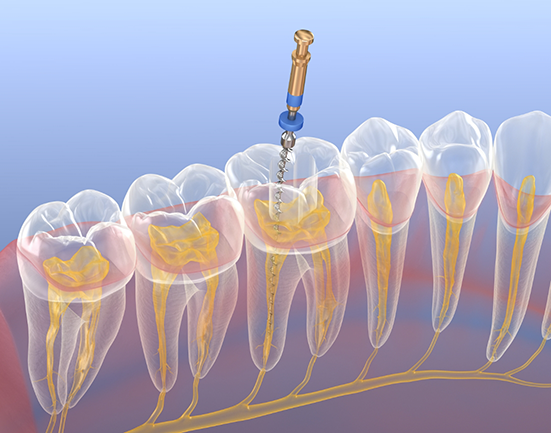
The noticeable portion of your natural tooth or crown is guarded by dental enamel below the gums. Protection is also available down to the tip of the root by dentin. Within this enclosed cage and along the length of the root exists a long cavity, which is called the canal. It is saturated with the dental pulp and is also identified as the pulp chamber, which contains nerve tissue and blood vessels apart from other substances, all of which feed the tooth.
However, if the pulp becomes infected, the formation of bacterial products and debris results in excessive pressure inside the pulp. This condition results in significant discomfort, and sometimes unbearable pain, eventually leading to tooth loss. The dental pain might be because of a pulp infection, and the relief provided by root canal treatment makes it well worth it. The procedure ensures the infected pulp is eliminated from the tooth to provide relief to the patient, instantly, in most cases. This is also the primary procedure recommended by a dentist to save your natural tooth from further decay or from being extracted.
How Can a Root Canal Get Infected?

The reasons for the infection are simple:
- The food you consume can attack the enamel. Some food particles can stick to the teeth long after you finish eating. They stay in the spaces between the teeth and on the chewing surfaces of the molars.
- If you are regularly ignoring brushing and flossing, the bacteria present in your mouth begin to convert the sugar and carbohydrate content within the particles into acid. The acid has the potential to reduce the shielding effect of saliva on the enamel, which can erode the tooth. This causes cavities; if they are not filled, it can lead to the puncture of the enamel, causing the infection to affect the pulp.
- Bacteria in the mouth can also infect the gums. The loosening gums begin to expose and puncture the dentin layer that exists below these soft oral tissues. This provides a route for the infection to reach the pulp.
Regardless of the route taken by the infection, the pulp needs to be eliminated to prevent repeated infections. In the absence of this procedure, an abscess can develop, which can necessitate extraction of the tooth. The pulp can also be infected by other reasons, which include an untreated dental injury, a chip or a crack, a root fracture, or repeated tooth repair.
When is a Root Canal Needed?
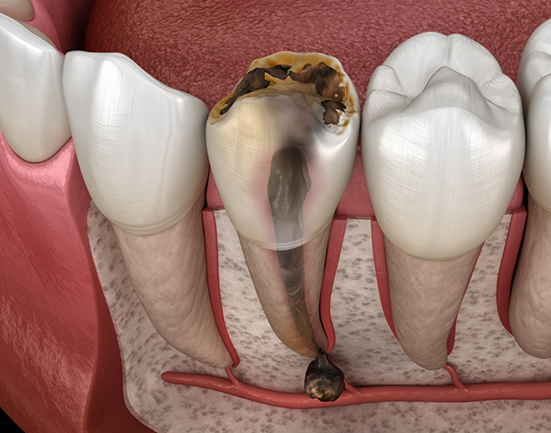
A root canal helps treat multiple issues, such as inflamed, dying, or dead nerves, or if you have a cracked or dead tooth. The procedure can also be repeated following failed root canal treatment. On some occasions, it may be necessary to remove nerves or teeth. The final decision of whether to move forward with this procedure or not should be made after consulting Dr. Gadhiya, who will listen to your concerns and examine your mouth thoroughly.
Below are other reasons you might need endodontic treatment:
- Toothache
- Infection
- Swelling
- Extreme sensitivity to cold and heat
- Fix a severe cavity
The Root Canal Process
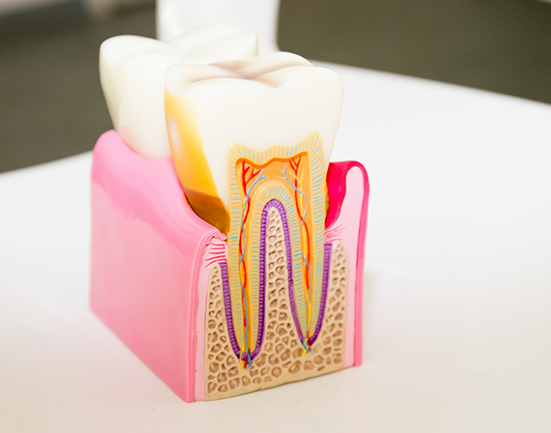
Here is a step-by-step process of the procedure:
Imaging

The initial step of this procedure is to assess the condition of the affected tooth. We use an X-ray image to determine the damage as well as the root configuration. Rear teeth generally have multiple roots, and many among them can be contaminated. The dentist requires information beforehand about the orientation of the root as well as identifying which root is infected.
Anesthesia

Surgery is always a requirement for a root canal. Therefore, the administration of local anesthesia is a common feature before an operation.
Opening the Canal
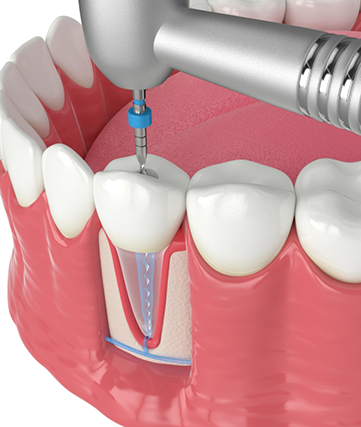
Some patients need to be sedated before anesthesia is administered. After the administration of local anesthesia, a hole is drilled through the enamel to expose the ailing areas. It instantly frees the pressure inside, and the patient doesn’t feel any pain even after the anesthesia wears off. The drilling is accomplished in the crown for the molars, and from the lingual side in the event of it being a front tooth that requires treatment.
Cleaning the Infected Tooth & Root
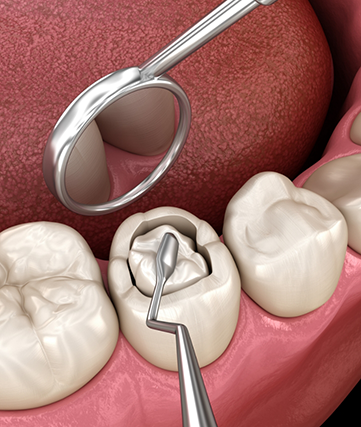
The tooth undergoing root canal treatment will be entirely vacated by removing nerve tissue and any other pulp matter. Thereafter, the canal is cleaned thoroughly and dried. Similarly, a pulpotomy removes the pulp tissue from the tooth chamber, but from a baby tooth instead of a permanent one.
Sealing

The cleaned space must not be left unfilled because of the risk of abscess or infection. We will saturate the empty canal with rubber-like material known as gutta-percha along with a resin-sealing solution to ensure spaces are not present inside.
Filling & Temporary Crown

As the mouth heals, the new hole will be covered with a temporary restoration. The small filling may be planted to seal the end of the root canal, and a few sutures or stitches are placed to help the tissue heal.
Permanent Seal & Smile

If the procedure goes smoothly, and the patient has no complaints, a temporary filling is placed before a permanent one is applied during the next appointment.
Why Do I Need a Dental Crown after a Root Canal?
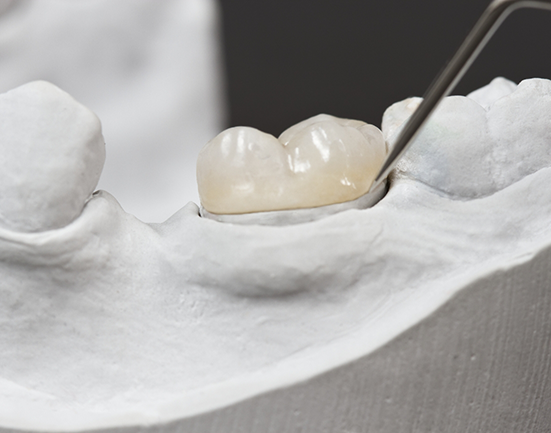
The procedure leaves a tooth with slimmer walls, making it vulnerable. We, therefore, recommend that the tooth be reinforced with help from a dental crown after the healing process is complete. If you decide to opt for a crown, we can give you a temporary one right away and dispatch the impressions to the lab to have a permanent one created. Another visit will be essential to achieve a proper fit. Additional work may be needed in some cases where the tooth is weak or broken to prepare it.
Contact us to make an appointment with our office near Frisco so that we can determine if a root canal is a proper procedure for your specific situation. Our dental care specialists will ensure your questions are fully answered so that you remain confident in your decision to pursue treatment.
Root Canal FAQs
Is getting a root canal painful?
According to the American Association of Endodontics, most patients who have undergone this procedure feel little to no pain during the treatment. Dentists will use local anesthesia to numb the area; therefore, the procedure is not that painful.
How long does a root canal take?
Thanks to the advancements in modern dentistry, root canal treatment can be completed in two visits. A normal root canal procedure can take 30 to 60 minutes, while a more complex case can take more than 90 minutes.
Why do root canals take two visits?
At your first appointment, the infected nerve and tissue are removed, and the tooth is dressed. This usually helps get rid of the pain. On the second visit, the root canal is disinfected, cleaned, shaped, and measured to prevent further infection.








